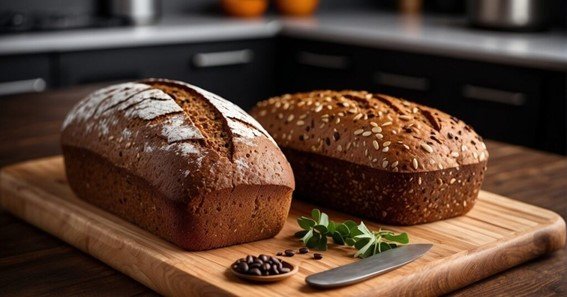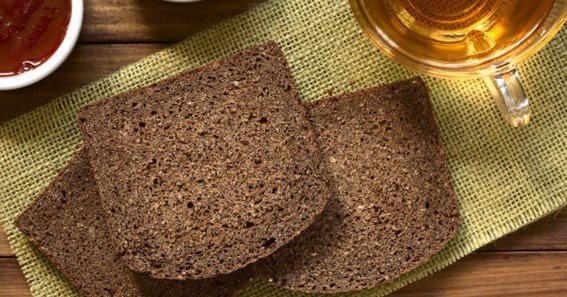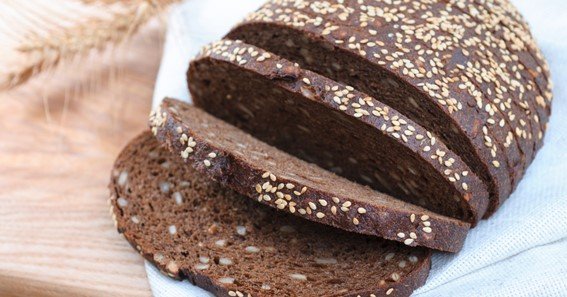What is pumpernickel? Pumpernickel is rye bread, and it is rich and slightly sweet. This bread has a fascinating history; its many versions show its adaptability and popularity. It covers Pumpernickel’s history and current forms. Covers storage and health advantages. In this article we discuss what is pumpernickel and explore it.
What Is Pumpernickel?
Pumpernickel is rye bread, and most Germans make it with a sourdough starter and coarsely crushed rye flour. Whole rye grains, or “rye berries,” give it a dark hue and rich flavor. Pumpernickel, a cheap and filling dish, was traditional “peasant food” for people experiencing poverty. It became popular at grocery stores and delicatessens in North America in the 20th century. Leaveners, coloring, and wheat flour are more common in North American pumpernickels than in Europe. These adjustments make the loaf lighter and less dense than its European counterpart.
Understand Pumpernickel Bread Production Nutrition And Variants

To comprehend pumpernickel, one must study its history, production, nutritional value, and variants. This article explains everything about this intriguing bread.
Modern Vs. Traditional Pumpernickel
Traditional European pumpernickel baking requires time-tested processes. Making bread with coarsely ground rice flour, whole grains, and sourdough starter is typical. The dough then bakes steadily at low temperatures for 16–24 hours. When baked this way, Rye’s natural sugars caramelize, creating a thick, dark loaf with many flavors.
However, modern North American pumpernickel doesn’t usually follow this strategy. Commercial forms may contain wheat flour, artificial coloring, and flavorings. These alterations make the bread lighter and less flavorful than the European loaf. It bakes faster, changing the bread’s texture and density.
Flavor And Texture
Pumpernickel is known for its taste and texture. The bread is rich and chewy due to whole rye grains and roughly crushed rye flour. Rye’s inherent sugars caramelize during extensive baking. This gives the bread its characteristic sweet-sour flavor.
Pumpernickel pairs nicely with many dishes because to its rich, nuanced flavor. It complements intense flavors like smoked meats, pickled fish, and pungent cheeses. This mildly sweet ingredient pairs well with honey, cream cheese, and nut butter, making it suitable for sweet and savory dishes.
Healthful
Pumpernickel is nutritious because of its whole grains. Pumpernickel has rye’s bran, germ, and kernel, unlike refined flour bread. Thus, it contains several vitamins, minerals, and fiber. Pumpernickel fiber improves digestion, balances blood sugar, and fills you up. Health benefits of Pumpernickel’s roughly milled rye flour. Antioxidant richness reduces inflammation and stress.
Pumpernickel has thiamine, riboflavin, and niacin. Vitamins improve vitality and health. Professionally made pumpernickel may be unhealthy. Some store-bought breads are harmful due to processed flour, corn syrup, and sugars. Pumpernickel tastes best with whole, natural ingredients and few chemicals.
Pumpernickel Compared. Rye Bread

Pumpernickel is a rye bread with several differences. Rye flour comes from milling rye berries and removing most bran and germs. Rye bread uses light or dark rye flour. Because this approach removes soft endosperm, the loaf is lighter and less nutritious.
Pumpernickel contains entire rye berries, unlike finely crushed rye flour. This produces a thicker, darker, tastier bread. Pumpernickel is healthier than refined rye bread because it contains more nutrients from whole grains.
Pairing Pumpernickel
Pumpernickel bread’s robust flavor complements many foods. European open-faced sandwiches often include smoked salmon, pickled herring, liver pate, or other toppings. Due of its density, it may withstand heavy toppings without sogginess.
Pumpernickel can be sweet or peppery. It pairs well with honey, jams, and nut butters because to its sweetness. Eat it for breakfast or snack. Due to its robust taste, the bread adds crunch and depth to soups and stews.
Freezing Pumpernickel
This bread freezes nicely, making it easy to store. Cut a large loaf of bread before freezing. This simplifies thawing and dividing. Wrap the loaf tightly in aluminum foil or plastic wrap and place it in a freezer bag or airtight container.
Pumpernickel bread freezes well for three to four months. Remove as many slices as desired and warm them at room temperature to defrost. Toasting them from the freezer is quick and straightforward. By freezing pumpernickel, you can preserve its quality and taste.
Is Eggs Pumpernickel Bread Healthy?
The ingredients used to make pumpernickel bread affect its health. Making your bread or buying from a natural bakery is usually healthier. Pumpernickel retains its health benefits when made with pure rye flour, no sweeteners or other flours. It’s high in vitamins, minerals, and fiber.
The nutritional value of commercial pumpernickel can alter. Store-bought bread may contain refined flours, corn syrup, and additional sugars, making it unhealthy. Verify the ingredients to ensure health. Choose pumpernickel bread with whole rye flour and a few additives.
Conclusion
Pumpernickel bread is a unique rye bread with a lengthy history. It’s thick, black, and slightly sweet, unlike other breads. This makes it a classic and modern favorite. Pumpernickel, whether European or North American, is always a good choice. Due to its history, health benefits, and variety of flavors, the bread is a perfect addition to any bread lover’s collection. Pumpernickel is more than just bread; it is a cooking style with enduring appeal. Many meals benefit from its robust flavor and substantial toppings. In above we discuss what is pumpernickel and discuss more about it.
FAQ
How Are Pumpernickel And Rye Bread Different?
Unlike refined flour in rye bread, whole grains give pumpernickel a rich texture and dark hue.
Can You Make Pumpernickel Bread At Home?
Homemade pumpernickel requires coarsely ground rye, a sourdough starter, and a long baking time for the original taste.
How Long Can Pumpernickel Bread Be Left Outside?
Pumpernickel bread includes a lot of rye, so securely wrapped, it lasts four to five days at room temperature.
Does Pumpernickel Bread Lack Gluten?
No, pumpernickel contains gluten-containing rye. Celiac and gluten-sensitive people should avoid it.
Do Pumpernickel Breads Freeze Well?
Pumpernickel bread freezes well for 3-4 months. Before freezing, cut it up for easier serving.
Sources:
https://en.wikipedia.org/wiki/Pumpernickel
https://sporked.com/article/what-is-pumpernickel-bread/
https://www.swissbake.in/blog/4-health-benefits-of-pumpernickel-bread-you-must-know










